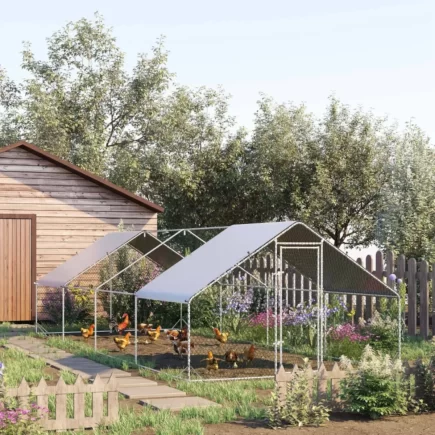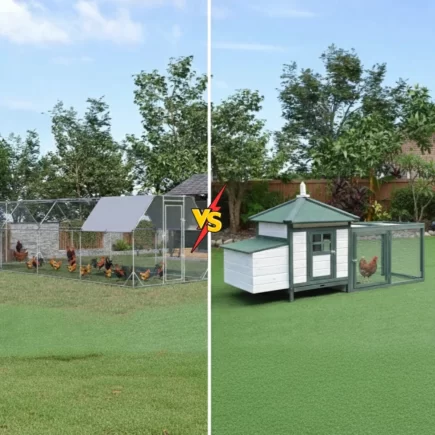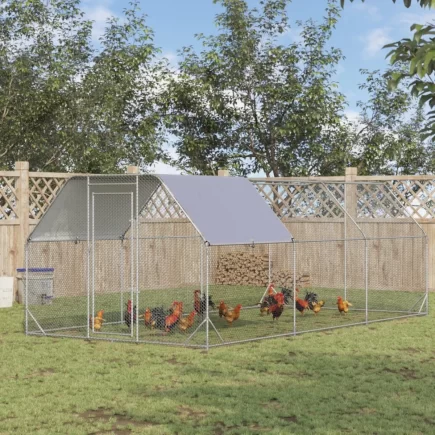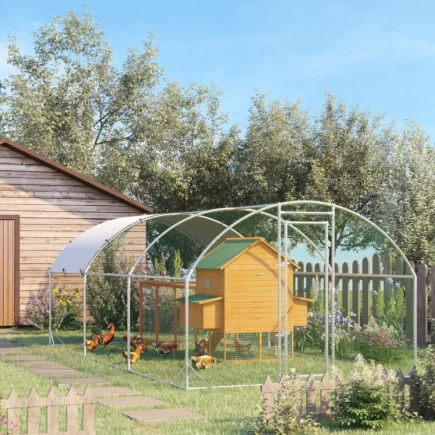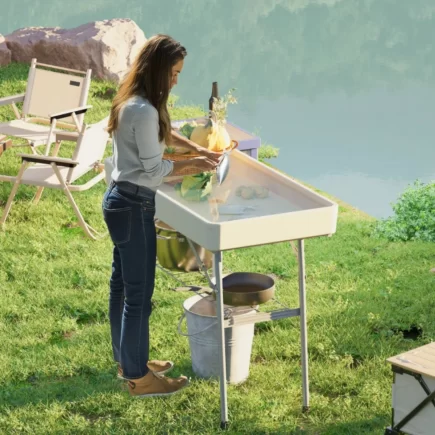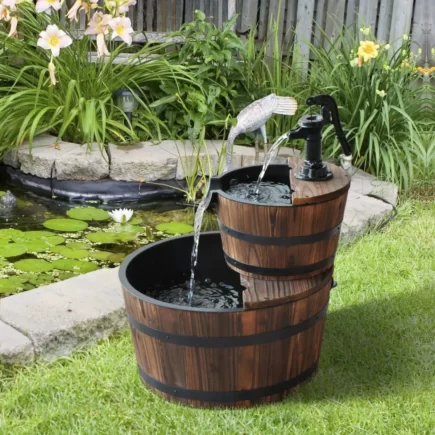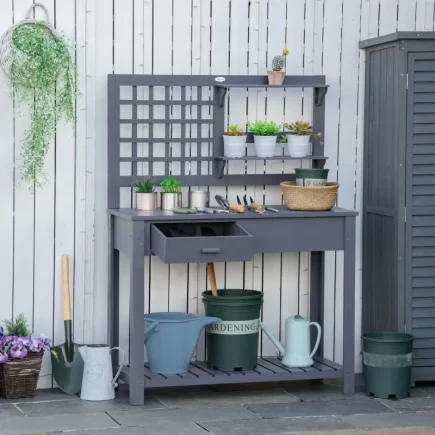Winter gardening can feel a bit daunting at first, but with the right setup and planning, your greenhouse can be a wonderful place for fresh produce all year long. A greenhouse lets you extend your growing season, so you can enjoy homegrown veggies and herbs even when it’s freezing outside.

Suitable Plants for Greenhouse Over Winter
To ensure a successful winter greenhouse garden, it’s crucial to select plants that are well-suited to colder temperatures. Fortunately, there are numerous cold-hardy vegetables and herbs that can thrive in a Greenhouse during the winter months, here are the details:
Leafy Greens
Leafy greens are perfect for growing in the winter months because they thrive in cooler temperatures. These vegetables are not only nutritious but also quick-growing, which makes them ideal for harvesting during the colder months.
- Kale
Kale is a hardy vegetable that actually tastes sweeter after being exposed to frost. Varieties like Winterbor and Redbor are particularly suited for winter gardening.
- Spinach
Spinach is a fast-growing green that can withstand frost, making it an excellent choice for winter. Varieties such as Winter Bloomsdale are great for winter harvests.
- Swiss Chard
This leafy green is versatile and can tolerate both heat and cold. It’s an excellent addition to your winter greenhouse.
- Arugula and Mustard Greens
These greens add a peppery flavor to your dishes and can grow quickly, making them ideal for a winter greenhouse garden.

Root Vegetables
Root vegetables are perfect for winter greenhouses, as the soil provides insulation, protecting the roots from freezing temperatures. Many root vegetables become sweeter when exposed to frost, making them even more flavorful.
- Carrots
Carrots are ideal for winter greenhouse gardening, as they thrive in cool soil. The cold temperatures help convert starches into sugar, enhancing their sweetness.
- Beets
Beets are a hardy root vegetable that grows well in cold conditions. When grown in a greenhouse, they can withstand frost and produce tender, flavorful roots.
- Radishes
Radishes are one of the quickest-growing vegetables, making them perfect for winter gardening. They can be harvested in as little as 30 days.
- Turnips and Parsnips
Both of these root vegetables grow well in cold temperatures and can tolerate light frosts. Turnips, in particular, benefit from the cold, as it improves their flavor.

Herbs
While many herbs are not well-suited for winter conditions, there are several varieties that thrive in a greenhouse during the colder months.
- Parsley
Parsley is a hardy herb that can withstand cold temperatures, making it perfect for winter greenhouse growing. Curly varieties like Dark Moss Curled are particularly suitable for winter.
- Thyme and Rosemary
These Mediterranean herbs are resilient and can grow well in winter, especially in a controlled greenhouse environment.
- Dill and Mint
Both dill and mint are hardy herbs that continue to grow in winter. They add fresh flavor to dishes and can be harvested throughout the season.

Brassicas
Brassicas are another excellent choice for winter greenhouse gardening. These cold-hardy vegetables thrive in cooler temperatures and can be harvested during the winter months.
- Broccoli
Broccoli is a great choice for winter greenhouses. Cold temperatures actually make the broccoli heads sweeter, making them a delicious winter vegetable.
- Cabbage
Varieties like January King are ideal for winter greenhouse gardening. Cabbage can tolerate frost and grow slowly throughout the winter months.
- Brussels Sprouts
These vegetables are hardy and can withstand cold temperatures. They take about three months to mature, making them perfect for winter harvests.

Tips for Winter-Specific Growing Conditions
The cold temperatures, reduced daylight, and low humidity which can hinder plant growth. However, with proper management, these challenges can be overcome. Let’s explore the key factors that need to be managed in a winter.
Temperature and Humidity Control
Temperature control is crucial in a winter greenhouse. Without proper regulation, your plants may not thrive. The goal is to maintain a temperature range that allows plants to grow steadily while protecting them from frost. Generally, most winter-hardy vegetables require temperatures between 40°F (4°C) and 55°F (13°C).
- Thermal Mass
Adding a thermal mass (e.g., water barrels or stone) to your greenhouse can help retain heat. These materials absorb heat during the day and slowly release it at night, helping to maintain a more consistent temperature.
- Humidity Management
Humidity levels must also be managed to prevent mold and fungal growth. Excess moisture can encourage diseases like powdery mildew, which thrives in cold, damp environments. Ensure your greenhouse has adequate ventilation to help control humidity levels.

Insulation Techniques for Winter
Good insulation is essential to keeping your greenhouse warm during the winter months. The better insulated your greenhouse, the less energy you’ll need to maintain the optimal temperature.
- Bubble Wrap
Wrapping your greenhouse in bubble wrap is a cost-effective way to add an extra layer of insulation. The air pockets in bubble wrap act as a buffer against the cold.
- Horticultural Fleece
Horticultural fleece is another great option for protecting plants from frost. It allows light to penetrate while keeping the plants warm.

Ventilation and Light Management
While insulation is crucial for retaining heat, it’s equally important to ensure adequate ventilation to prevent excess moisture. In winter, condensation can accumulate inside the greenhouse, leading to fungal growth and mold.
- Ventilation
Open doors and windows during sunny days to allow fresh air to circulate and reduce humidity levels.
- Grow Lights
Since winter days are shorter and often overcast, supplement natural light with grow lights. Full-spectrum LED grow lights are ideal for encouraging plant growth during the winter months.

Watering Wisely
Watering wisely in winter is crucial for greenhouse plants. Reduce watering frequency as plants need less moisture. Always check soil moisture levels and water sparingly to avoid root rot and ensure healthy growth.

TIP: If you’re looking for a winter-grade greenhouse to extend your growing season, check out the Outsunny Walk-In Polycarbonate Greenhouse for Winter. It offers year-round growth for vegetables, herbs, and tropical saplings, with UV-resistant polycarbonate walls and a durable aluminum frame. Its integrated rain gutters and adjustable roof vent will also help optimize conditions for your plants.

Enjoy Fresh Harvests All Winter
To sum it up, winter greenhouse gardening offers endless possibilities for fresh, homegrown food, even when the frost sets in. By choosing cold-hardy crops and managing temperature, humidity, light, and watering, you can enjoy a bountiful harvest all year round. Happy gardening!
FAQs
1. Can I grow tomatoes in a winter greenhouse?
Tomatoes are not ideal for winter greenhouses due to their sensitivity to cold. They require warmer temperatures and more light than winter conditions typically provide, making them better suited for spring and summer months.
2. Can I grow herbs like basil and cilantro in a winter greenhouse?
Basil and cilantro are sensitive to cold and won’t thrive in winter. However, herbs like parsley, thyme, and rosemary are cold-hardy and grow well in a greenhouse during the winter months.
3. How do I manage lighting in a winter greenhouse?
During winter, days are shorter, so supplement natural sunlight with grow lights. Full-spectrum LED grow lights are ideal as they mimic natural sunlight and encourage plant growth, ensuring your plants get the light they need.
4. How can I protect my plants from frost in the winter?
A greenhouse offers a perfect solution to protect your plants from frost by creating a warmer environment that shields them from freezing temperatures. You can also use insulation techniques like bubble wrap or horticultural fleece to further protect plants from the cold.

